“He’s always on the wrong side of every door.” The iconic line from T.S. Eliot’s poem “Rum Tum Tugger” sums up most cats. As soon as something catches their attention, they take off for the outdoors – or the indoors. And since they lack opposable thumbs, guess who has to open the door. You’re the perfect doorman. We love that natural feline curiosity, but getting up every five minutes? That isn’t so endearing. Wouldn’t it be easier if cats could open doors themselves? Well, if you install one or more cat doors, they can! (Okay, they’re not OPENING doors, but they’re handling the problem themselves, and that’s what’s important)
Portals
In the “good ol’ days,” cat doors consisted of smaller versions of doggie doors. A stiff flap of wood in a door allowed your feline to troop outside. And anything of the same size managed to come INSIDE. The system came with some imperfections. (Though if you locked yourself out and had a small child, the cat door saved you from calling a locksmith)
Now, cat doors benefit from technological evolution. They come with locking mechanisms to keep neighborhood pests from invading. You can even find cat doors designed to limit which cat gets to roam outside and who stays inside. And setup? You can position cat doors in wooden doors, sliding doors, screens, and windows. The versatility offers owners more options for their feline explorers.
And the fun doesn’t end there. When you decide to catify your home, cat doors join in on the fun. Indoor cat portals allow you to tuck litter boxes into closets or behind closed doors. They’re the final touch, every bit as important as hammocks and wall shelves.
Types of Cat Doors
Cat doors come in multiple forms. You’ll want to consider your fluffy friend’s personality and typical behaviors when you start shopping around. You also need to consider where your kitty roams. Are they venturing out on neighborhood rounds? Heading out to sprawl on the enclosed porch? Or just sneaking away for some privacy in the litter box? Your cat’s needs will help you narrow your search.
Indoor Cat Doors
Indoor cat doors usually skip the flap covering. They tend to resemble portals. You need to confirm the measurements, but most fit on standard doors. Of course, some install on walls (double-check those widths!).
Your cat gets easy access to another room (or closet) while children or dogs stay out. The cat door gives them a quick escape, or simply somewhere quiet and private. You can use the portal to keep the litter box or cat food dishes out of sight. It’s better than propping a door open (which invariably ends up accidentally closed).
Outdoor Cat Doors
Meanwhile, the familiar outdoor cat door continues its popularity. Your cat can dart into the backyard or onto the porch to get some fresh air. And while the basic design, complete with a flap to prevent the worst of the outdoor weather (and pests) from coming in, hasn’t changed, you DO get a few options to choose from.
- Traditional: Everyone recognizes these cat doors. They fit into the average outside door (always confirm measurements).
- Sliding Doors: Traditional cat doors don’t work on screens or sliding doors. But many people have sliders onto their porch. Luckily, you can now find special cat doors designed specifically for sliding doors.
- Windows: Perhaps a window isn’t exactly a “door,” but if you’re limited on your outdoor portals, these cat doors work beautifully. Your cat still gets outdoor access without the need to cut a hole in your door.
Choosing a Cat Door
Once you know what kind (or kinds) of cat doors you want to install, it’s time to start researching the best options for your home. You WILL have to knuckle down and work on the installation. That means the proper tools and know-how – or at least having the right person on speed-dial. So before you get carried away, make sure you have the following information in the back of your mind:
- Flap Size: Cat doors assume an average size of around 9-12 pounds. However, some cats fit that weight category but in a taller or wider body. You need to measure your kitty to make sure they can FIT through the portal.
- Height: Cats WILL drop down to go through the door. So the measurement you want to take is from the top of the shoulder to the bottom of the chest.
- Width: Don’t stop at measuring your cat from side to side; you need to add an inch. Why? Cats won’t pass through anything narrower than their whiskers.
- Door Measurements: You found a fantastic cat door, but it won’t fit your door. Look at a depth of your door (or wall) CAREFULLY. Most doors are consistent, but you could get in trouble if you have an older home or a special door. Garage doors, in particular, tend to be on the thin side.
- Access: Indoor cat doors don’t present as much of an access problem as outdoor portals. Unless you want to set up a B&B for every critter in the neighborhood, though, you want SOME way to control entry. Even if it’s just a lock.
- Installation: Unfortunately, there’s no such thing as a pop-in cat door. So if you’re not mechanically inclined, consider hiring a professional.
The Pest Side of Cat Doors
With outdoor cat doors, you run the risk of the neighborhood fauna discovering the portal. And if food smells sneak past the flap, raccoons, in particular, may decide to investigate. Not to mention the feral cats patrolling in the area. You can attempt to set up deterrents, but they may or may not work on raccoons. And raccoons are SMART! They often figure out how to pry open locked cat doors. OR they learn to “piggyback” through the door behind the cat!
If you’re concerned about unwanted houseguests, consider setting up a security camera. You’ll see who approaches and what technique they’re using. You can then work on anti-raccoon plans.
The Best Cat Doors
Cats come with independent streaks. It’s one of the things cat lovers adore most about their felines. But when you combine independence with curiosity, you get cats that bounce from inside to outside every five minutes. That makes curling up with your favorite book a little challenging. Install a few cat doors, and suddenly both of you are happy. Your kitty can slide in and out of their portal whenever they wish, and you can finish that chapter in peace. It’s the perfect solution!
The Best Indoor Cat Doors
You’d rather not have your cat’s litter box on display for everyone who comes over. Or the dog considers unattended cat food bowls the perfect snack. Maybe you saw an article on catification and want to start creating a feline paradise in your home. Any of these decisions work best with an indoor cat door. Your cat gets a nifty portal that gives them the freedom to move throughout the house – while keeping unwanted intruders OUT. What could be better?
Why not offer a little extra with your indoor cat door? CatHole takes catification to the next level. The portal features brush bristles designed to groom your cat as they pass through! It’s a nice addition, giving your kitty a thorough scratch on their trip through the door. The Baltic birch wood can get painted to match the color scheme in your home, and you get a convenient cutting template to help with installation. The cat door measures 8.5 inches tall by 8.5 inches wide, and CatHole states it works for cats 20 pounds and under.
Downsides? The bristles make the portal narrower, and people with larger cats said their kiddos struggled to get through. The brush itself also isn’t the most durable; bristles fell off after a few months. The cat door will still work without them, but it’s something to consider.
The Good
- Baltic birch wood (paintable)
- 8.5" x 8.5"
- Rated for cats 20 pounds or less
- Includes grooming brush
The Bad
- Bristles make passage narrower
- Bristles not durable
There’s no cuter cat door than Kitty Pass’s. With the little ears, your cat will KNOW the portal’s just for them. The smooth plastic comes in a semi-gloss white finish, but you can always choose to paint it if you prefer a different color. It comes with 3M tape for installation, skipping screws or nails. The opening measures 7.5 inches wide and 6.5 inches tall, and Kitty Pass feels it’ll work for cats 20 pounds or less.
The downsides? Compared to most cat doors, this one runs to the pricey side. You’ll probably also want to consider using screws rather than the 3M strips if you want a stronger bond.
The Good
- Smooth plastic (paintable)
- 7.5" x 6.5"
- Rated for cats 20 pounds or less
The Bad
- Expensive
- 3M strips not very sturdy
Maybe you want to provide a little more protection with your indoor cat door. PetSafe offers that with their Interior Cat Door. A transparent flap covers the opening, allowing your kitty a little more discretion – while still giving them a chance to see through the portal. A two-way sliding lock keeps out curious, probing noses. The high-impact plastic frame comes with a cutting template that allows you to install the cat door pretty much anywhere: cabinets, doors, storage containers, you name it (so long as it’s less than 2 inches thick). The opening is 7.8 inches by 6.5 inches, and PetSafe recommends the portal for cats 15 pounds or less.
So what are the downsides? Unhappily, the 15-pound weight limit means a lot of cats get left out. You also use double-sided tape to attach the back, which may not hold long in certain doors. Choose your placement carefully.
The Good
- High-impact plastic
- 7.8" x 6.5"
- Rated for cats 15 pounds or less
- Transparent locking flap
The Bad
- Excludes large cats despite size
- Double-sided tape may not hold in certain doors
The Best Outdoor Cat Doors
Some cats enjoy a breath of fresh air now and then. Or perhaps you have a catio or enclosed porch. (Our cats love sprawling on our chairs…more than they love the outdoor beds we got for them) You want your kitty to enjoy the space you worked so hard on, but waiting at the door all the time doesn’t work with your schedule. That’s where outdoor cat doors come in. With sturdy flaps in place to prevent rain, snow, or leaves from blowing into the house, they allow your beloved feline to bounce outside. And if you go for the technological upgrade, you can control exactly who goes in and out.
You don’t want to leave out the bigger cats in your life. Cat Mate thought of them when they developed their outdoor cat door. The portal measures 9 inches by 8.3 inches, allowing cats with a height of up to 13 inches to pass through. (Better than imposing a weight limit!) You get a template that allows you to install the portal on a door, panel, or wall. External rain-proof seals and the magnetic closure ensure the weather STAYS outside. The four-way locking mechanism lets you keep it open, open only in, open only out, or lock shut. And there’s a silent brush around the flap, so your cat doesn’t get startled by the flap’s movements.
Downsides? The magnets are STRONG. In fact, some cats struggled to push through them, leaving them trapped. Also, installation can get a little tricky. Make sure you read the instructions carefully.
The Good
- Weather-proof seals
- 9" x 8.3"
- Rated for cats 13" high or less
- 4-Way locking mechanism
The Bad
- Magnets may be too strong
- Tricky installation
You’re leery about cutting a hole in one of your doors. You don’t want to deprive your cat of outdoor access, though. Ideal Pets understands. If you have a sash window, you can still install a cat door! Their aluminum construction holds up against the elements (or looks attractive on a catio or porch), while the Lexan flap allows your cat a clear view outside. Best of all, you can choose from FIVE different flap sizes! They range from 5 inches by 7 inches all the way up to 10.5 inches by 15 inches, accommodating cats from 2-25 pounds. A simple lock protects the cat door from unwanted intruders.
The downsides? Window installations tip the scales on difficulty. You’ll want someone handy on stand-by. And, unhappily, in strong winds, the Lexan tends to give – even with the lock in place. Consider your window choice carefully.
The Good
- Aluminum construction with Lexan flap
- Weather-proof seals
- 5 different sizes
- Rated for cats weighing 2-25 pounds
- Locking mechanism
The Bad
- Tricky installation
- Strong winds can push in Lexan flap
You want your cat to have outdoor access, but you don’t want ferals or neighborhood pests to come INSIDE. No problem; PetSafe thought of that. Their Electronic SmartDoor takes cat doors to the next level. With a little battery power and a handy access key you attach to your cat’s harness or collar, the door only opens for them! The door’s programmable for three modes: automatic, locked, and unlocked (unlocked works if you have more than one pet but don’t buy additional keys). The cat door works for doors, or you can buy a wall-conversion kit if you want to go for a thicker medium. You have two sizes to choose from, and you can always upgrade with additional keys – up to FIVE pets.
So what are the downsides? Naturally, the batteries aren’t included. And if you forget to keep an eye on the charge, you may inadvertently lock your cat in or out. Also, this kind of technology doesn’t come cheap. And while an access key sounds awesome, the key itself is large for some cats (you can see it in the picture).
The Good
- Plastic frame
- Weather-proof seals
- 2 different sizes
- Locking mechanism with access key
- Works for up to 5 pets
The Bad
- Expensive
- Batteries not included
- Access key large for some cats
- Must purchase additional access keys
PetSafe jumped on the cat door bandwagon, and they provided an option for every need. Their Freedom Aluminum Sliding Glass Pet Door caters to everyone with sliders onto the porch. This particular cat door inserts between the door, creating a new section with the appropriate flap. Built-in seals prevent air from escaping, so you won’t see your heating/cooling bill jump. Five sizes work for every door, and you can choose from white, bronze, or satin color options. Best of all, there’s NO cutting involved! You simply slide it into place and detach it whenever you want!
Downsides? The flap comes with a plastic cover to prevent your cat from leaving, but otherwise, there’s only a magnet for a “lock.” It’s not the best security measure. The frames and bolts are inflexible plastic. So if you choose the wrong size and try to squeeze them into place, they’ll snap. Take your measurements carefully to prevent breakage.
The Good
- Plastic frame
- Weather-proof seals
- 5 different sizes
- 3 colors
- No cutting needed for installation
The Bad
- Plastic cover is the only locking mechanism
- Will break if too much pressure applied
Maybe you have a screen door you want to use for a cat door. PetSafe’s Pet Screen Door works for that situation. The plastic frame screws into your existing screen door or window, while heavy-duty mesh keeps out unwanted insect pests. Sliding panels serve as the locking mechanism, keeping vermin from intruding during the night. And with an opening of 17.1 inches by 10.3 inches, any cat under 30 pounds can pass through without a problem.
The downsides? Again, the locking mechanism leaves a little to be desired. Crafty raccoons will find a way to get those panels loose. And the mesh panels aren’t the most durable, coming apart with frequent use. Not to mention that screens get difficult to install.
The Good
- Plastic frame
- Heavy-duty mesh
- 17.1" x 10.3"
- Rated for cats 30 pounds and less
The Bad
- Sliding panels are the only locking mechanism
- Difficult to install
- Mesh panels aren't durable
The PetSafe Wall Entry gives you a new option for cat doors: the wall! The telescoping tunnel expands to accommodate different depths, so you can choose to install it in a door or go through an interior or exterior wall! (The maximum thickness is 7.3 inches, so keep that in mind) A double flap on the door provides weather-proofing AND energy efficiency, so you won’t see your gas or electric bills soar. The outer PVC frame holds up to UV exposure without a problem, too. In the middle, you get a sliding panel to lock the cat door when your cat’s finished for the night. The portal’s 5.3 inches by 8.1 inches, and it’ll allow cats of 15 pounds or less to pass through.
So what are the downsides? This cat door’s on the small side. And while it’s weatherproof, it DOES allow the draft to get in. So if you live in colder regions, maybe skip this one.
The Good
- PVC frame
- Telescoping tunnel
- 5.3" x 8.1"
- Rated for cats 15 pounds and less
- Interior sliding panel "locks"
The Bad
- Excludes large cats
- Drafty
If you want the height of technology for your cat door, you want SureFlap. No magnets or sliding panels here. Nope, this cat door works with your cat’s microchip! You program the portal to recognize the microchip already embedded in your cat’s shoulder blades. SureFlap’s smart enough to recognize microchips with nine, ten, or fifteen-digit numbers, and it can remember up to THIRTY-TWO cats! (Hopefully, you don’t have that many cats running in and out of your house) You can install the cat door in doors, windows, or walls (you’ll need an extra kit there), and the transparent flap makes visibility easy for your cat. The opening’s a 5″ square, though there are three other sizes if you need.
Downsides? Yeah, those batteries don’t come included (of course). The flap also makes an audible click when it opens, which may or may not catch your cat off-guard. It also reacts within a couple of feet, which may present some trouble when your cat’s outside.
The Good
- PVC frame
- 5" x 5"
- Microchip-activated
- Can program up to 32 cats
The Bad
- Excludes large cats
- Batteries not included
- Audible click on opening
- Triggers within a couple feet
Inside and Outside
You may get frustrated with your cat’s indecision on where they want to sit. The birds are singing outside. Then they hear the can opener inside. The door swings open and closed, letting cold air in or hot air out. (Not to mention having to get up and down all the time)
Cat doors let your cat move in and out on their own, without help from you. They retain their feline freedom – and you can go about your day.
It’s the perfect compromise for the Rum Tum Tugger in your life.

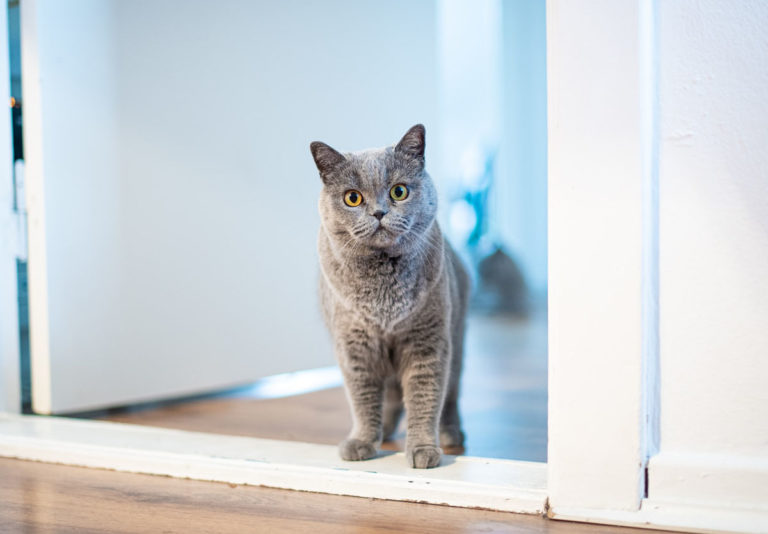
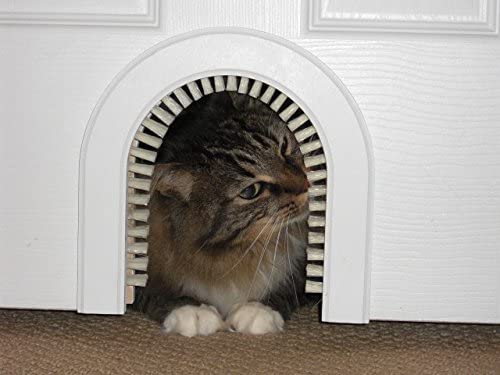
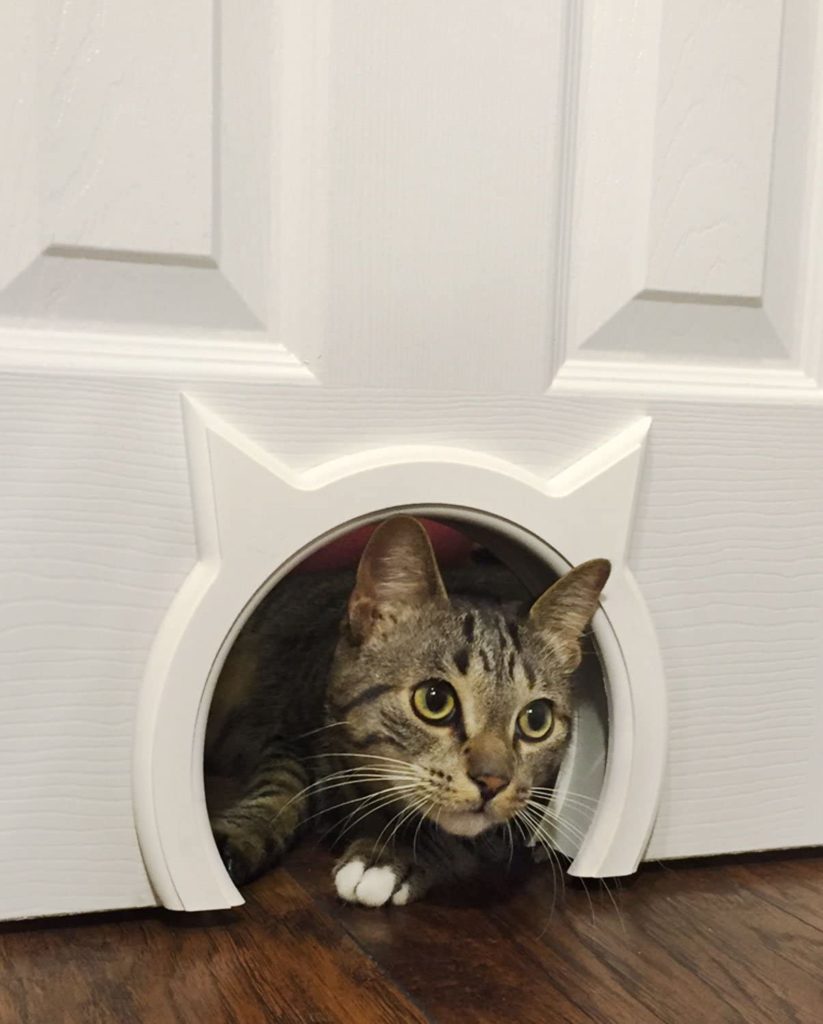
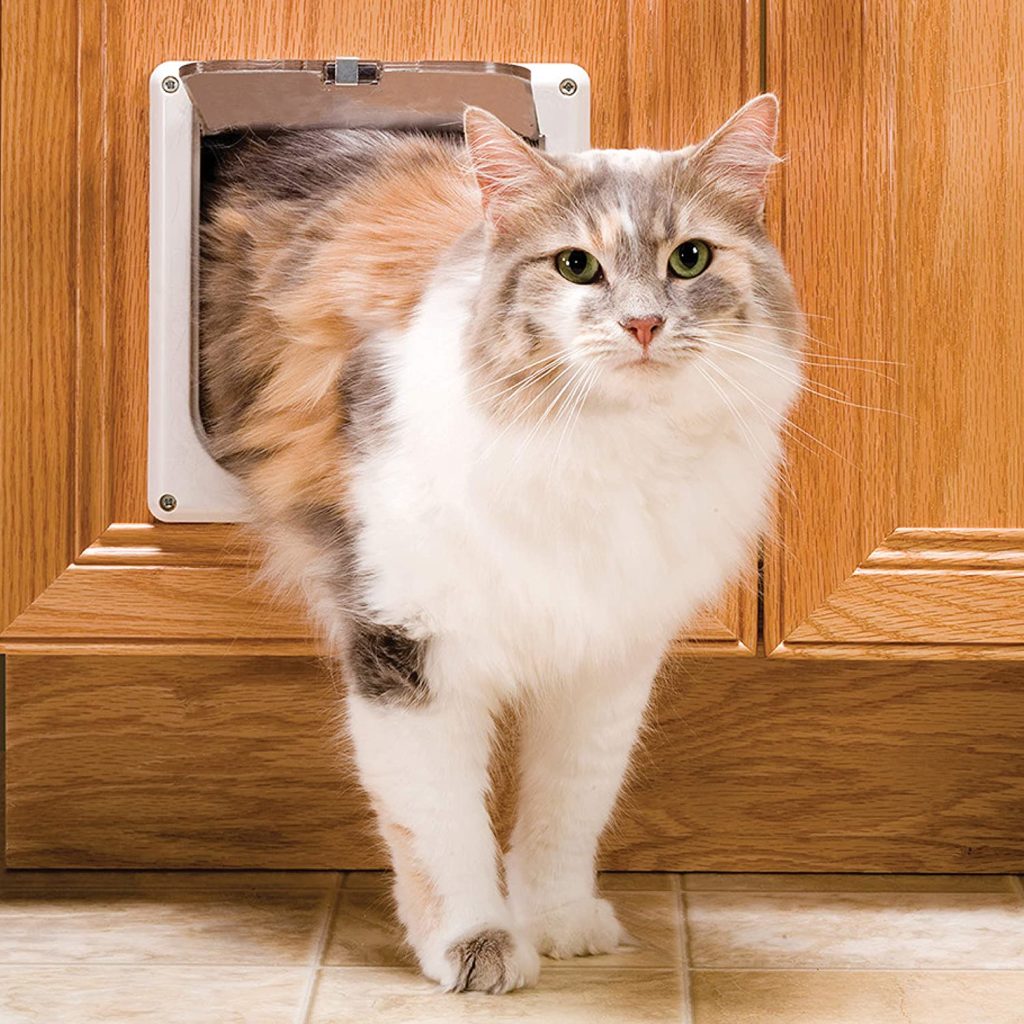
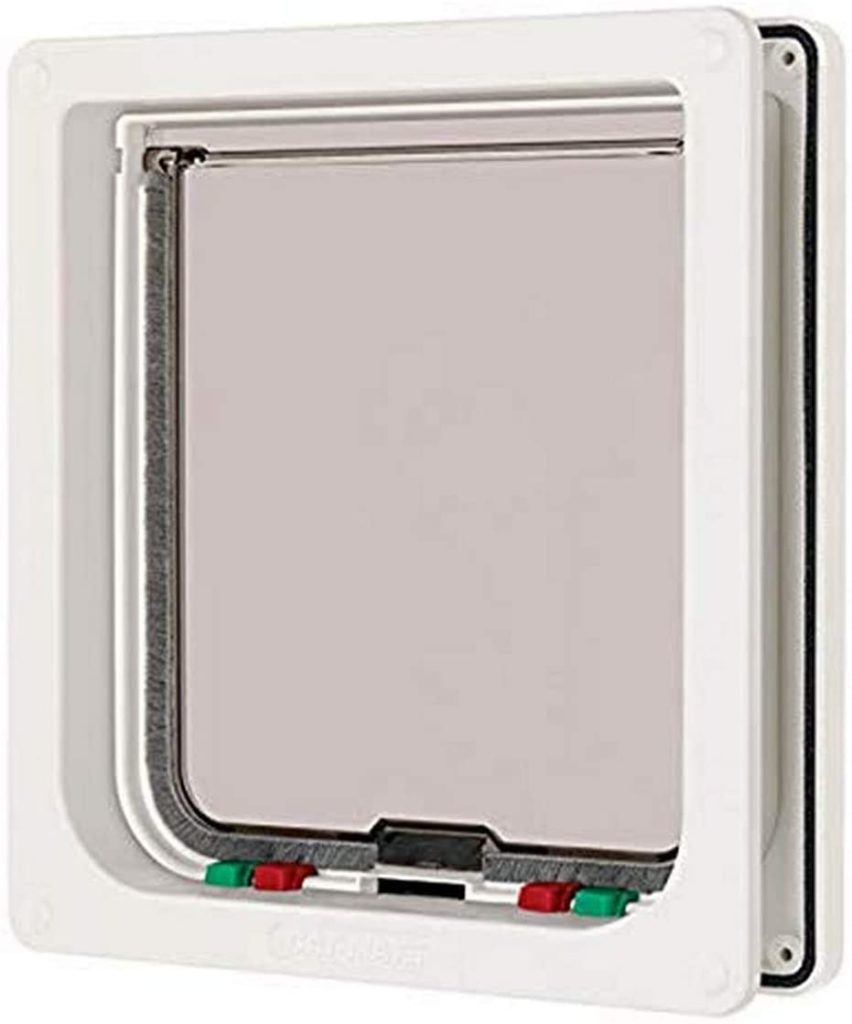
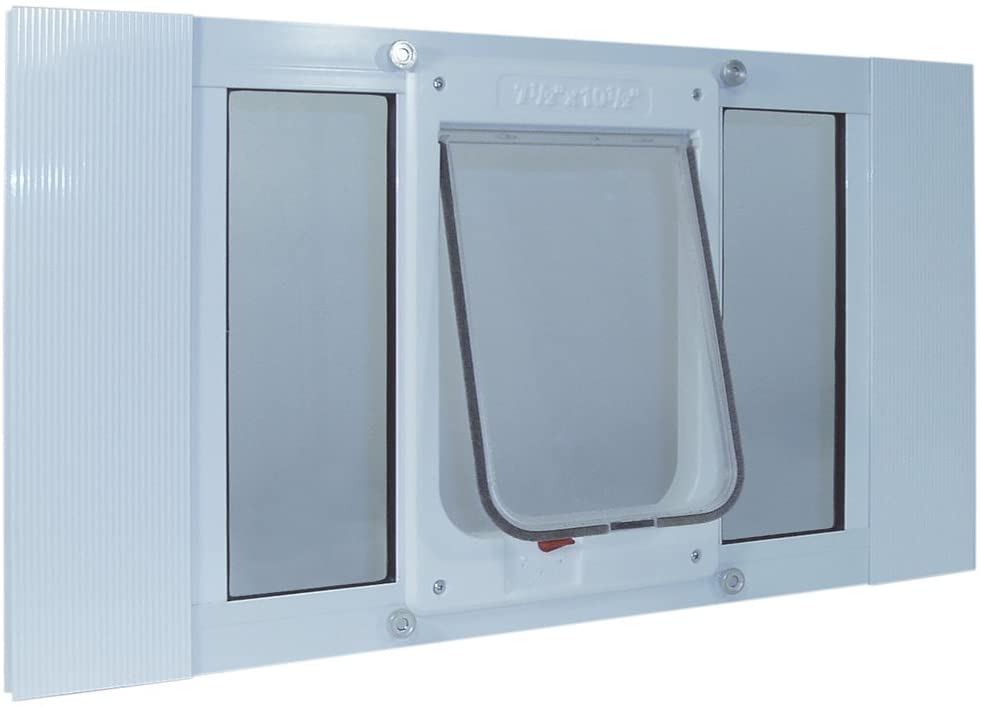
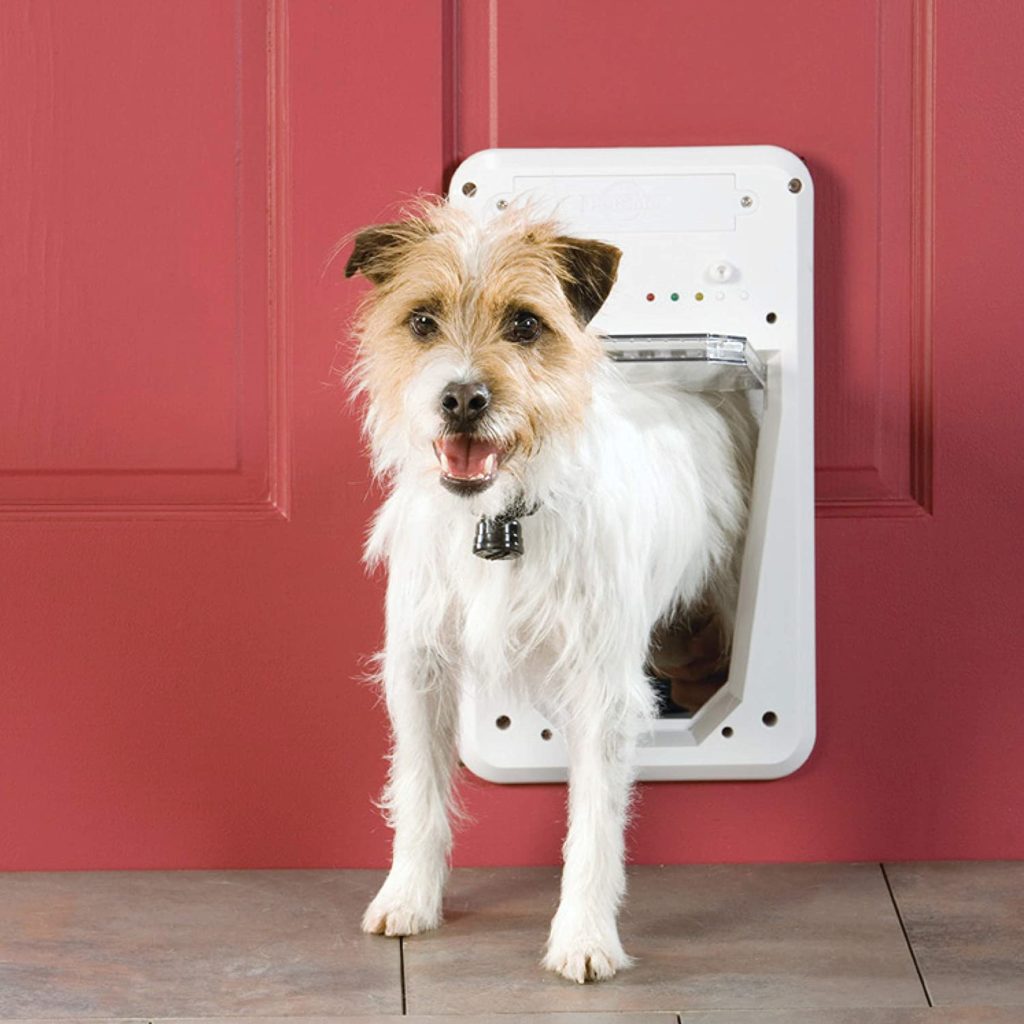
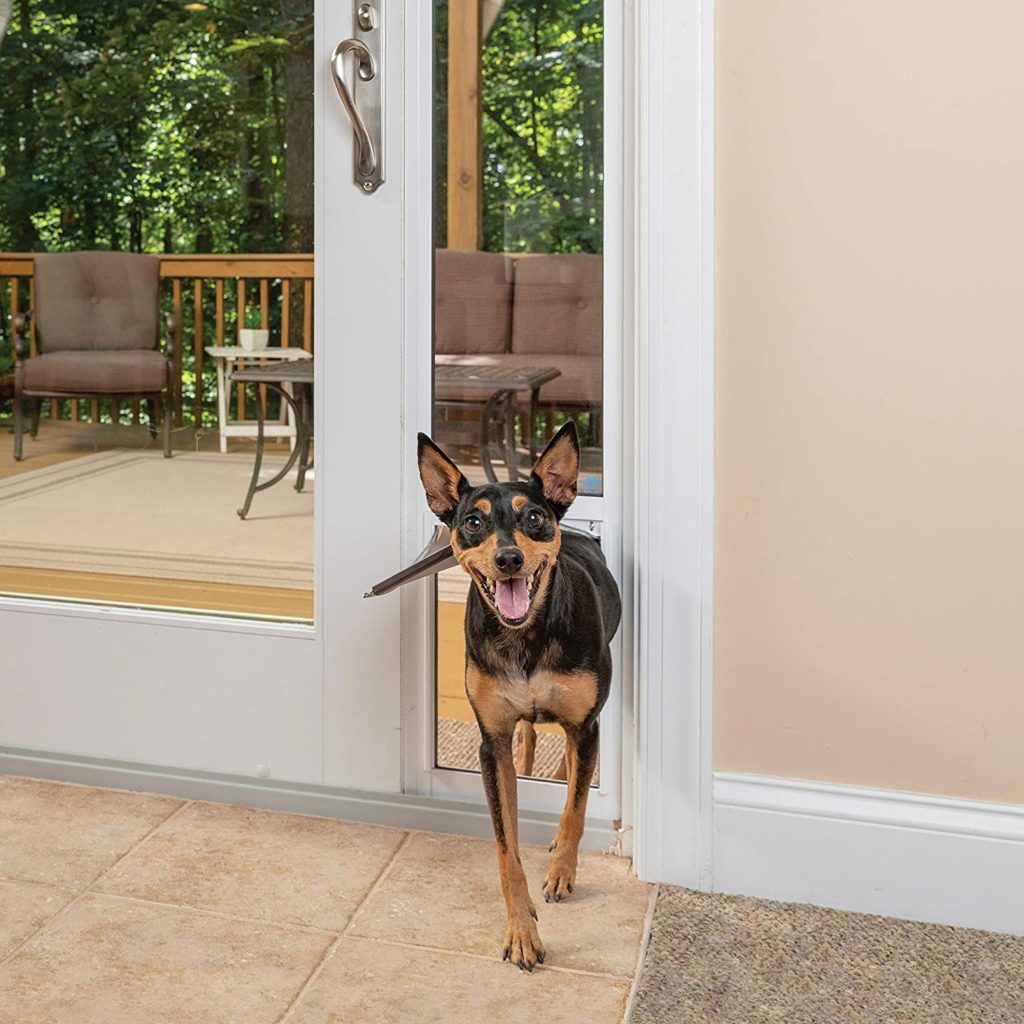
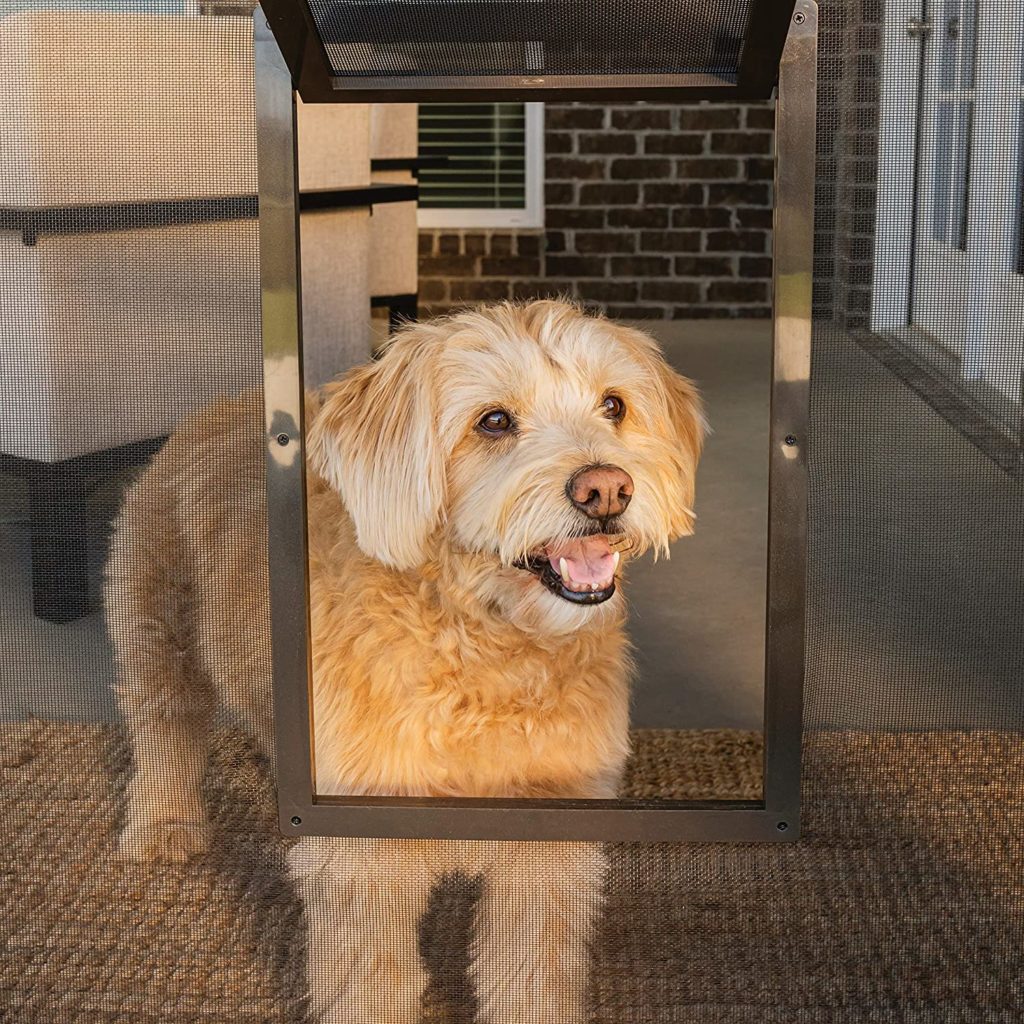
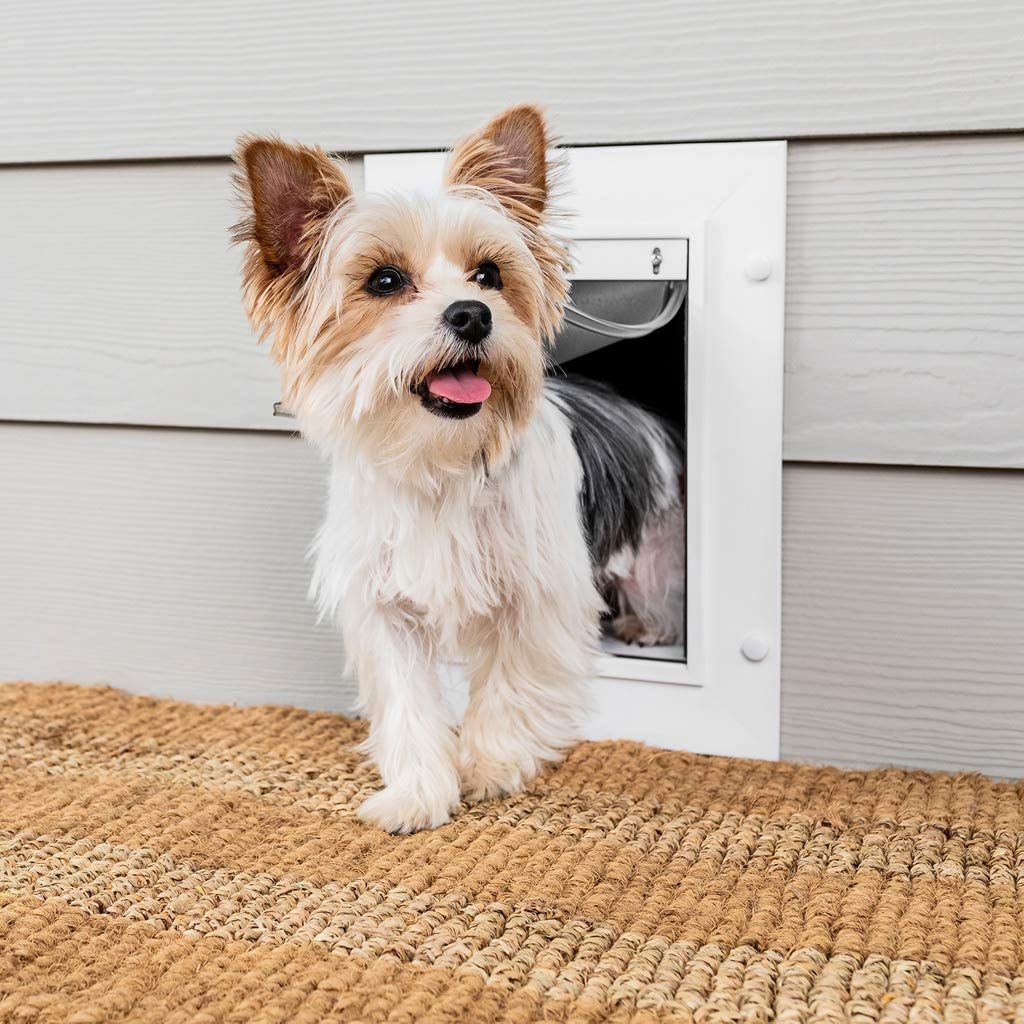
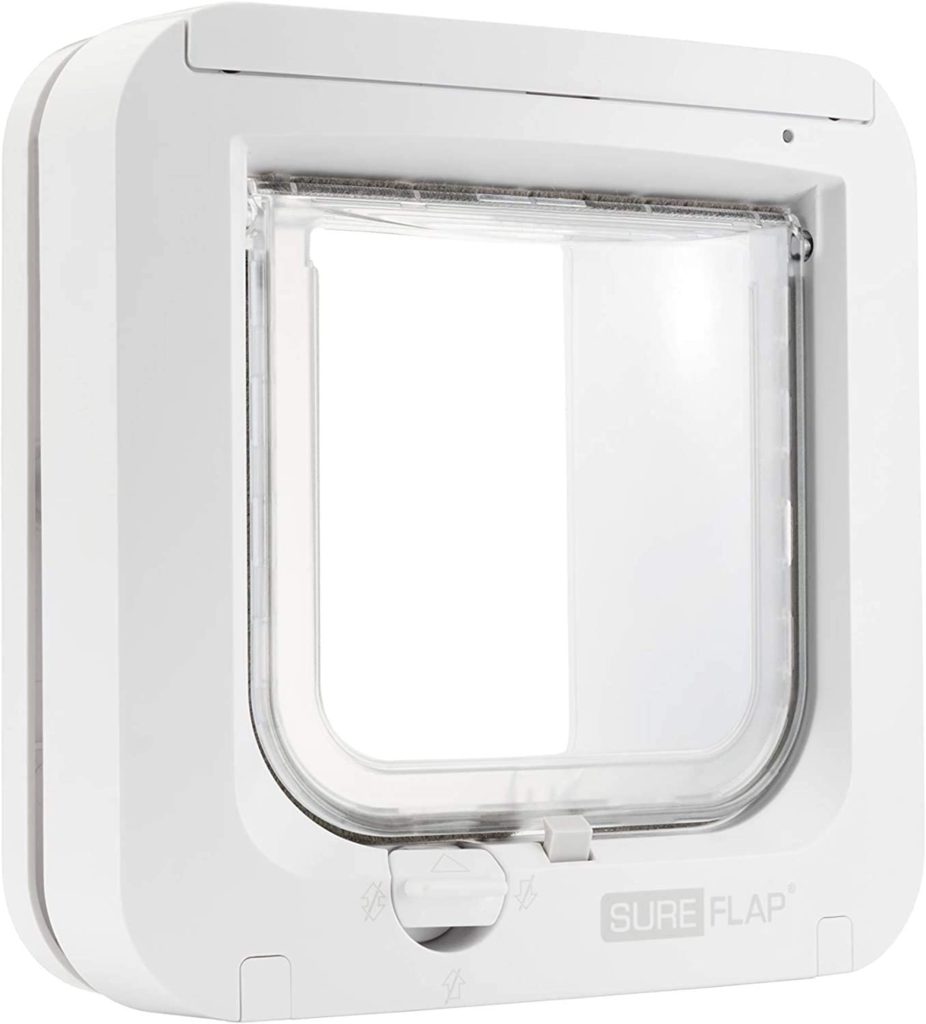



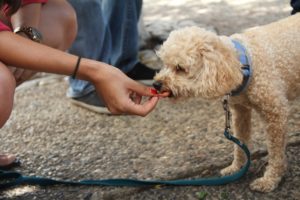
No comment yet, add your voice below!